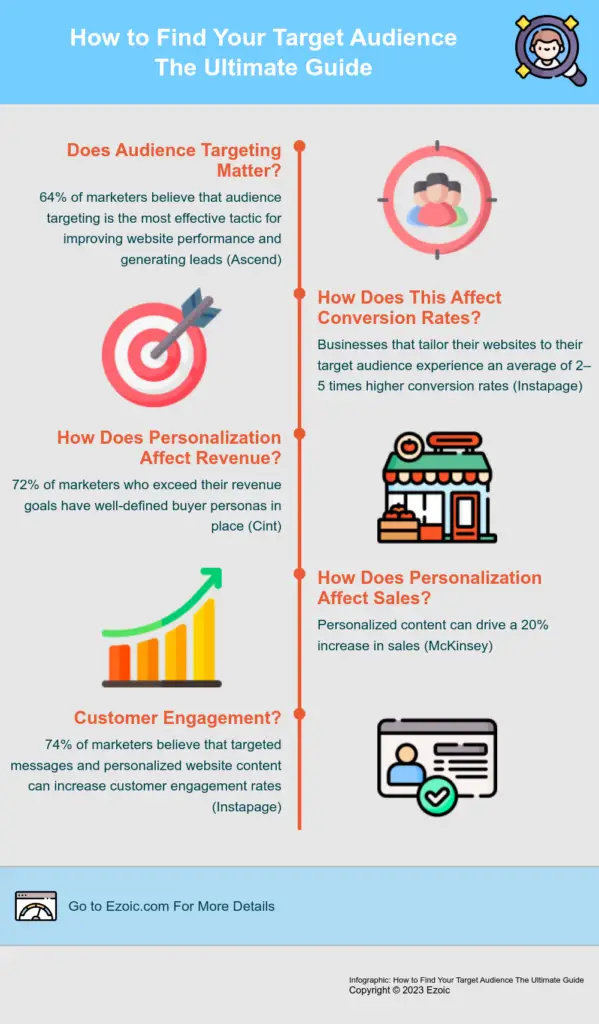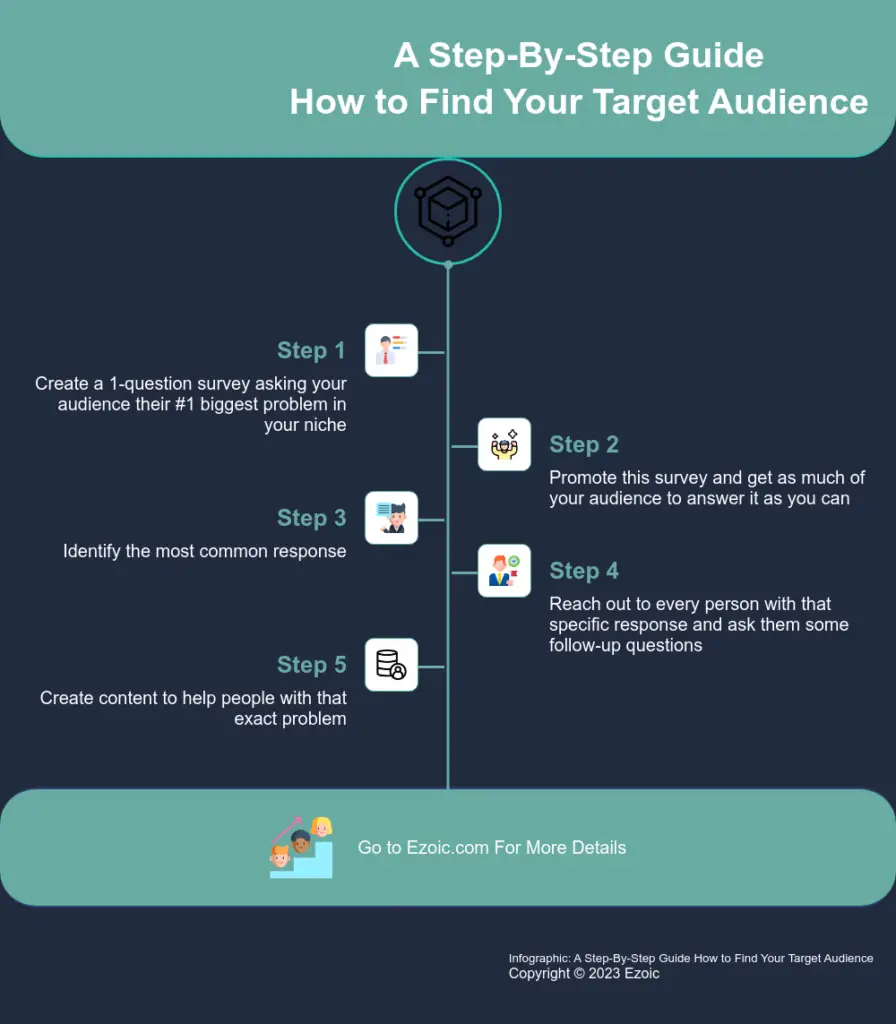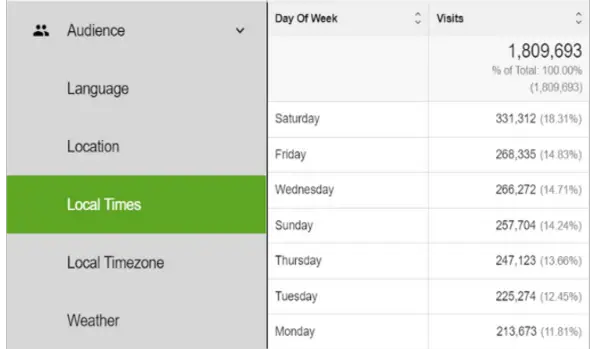Back in 2004, economist Renée Mauborgne and business strategist W. Chan Kim wrote a groundbreaking book, Blue Ocean Strategy, Expanded Edition: How to Create Uncontested Market Space and Make the Competition Irrelevant. Selling over 4 million copies, The Economist had high praise for the book, saying it “is the most successful book on business master-planning.”
Blue Ocean Strategy’s central premise was simple: don’t set up shop in crowded, competitive markets (“red oceans”), find untapped markets with no competition (“blue oceans”) and set up shop there. Countless content creators began using this strategy to find their target audience, carving out special niche websites and online communities that have virtually no competition.
If you could find the right niche, you’d own most of the market share overnight. Cirque du Soleil took a centuries-old concept (a circus), removed the animals and traditional circus acts, and blended in highly artistic performances to create a truly novel idea.
Nintendo carved out a new niche when they unveiled the Nintendo Wii console, one of the first commercially viable motion control consoles; they completely stopped competing with other consoles and sold over 100 million units to a new market space.
Yellow Tail, an Australian wine brand, applied the Blue Ocean Strategy by entering the wine market with a simple, approachable, and affordable product; by using playful labeling and focusing on easy-drinking wines, they appealed to consumers who found the wine selection overwhelming or intimidating. These are true blue ocean strategies that worked.
Now, finding a true “blue ocean” with a target audience has become much more difficult. When Blue Ocean Strategy was written in 2004, there were only about 50 million websites on the internet…as of 2023, there were nearly 2 billion. The sheet magnitude of sites, combined with the advent of generative AI, the number of truly unique, untapped markets with no competition has reached almost zero.
That’s why publishers need to focus on finding out exactly who their target audience is, and give them exactly what they want. That way, your site can survive and thrive even amidst thousands of strong competitors, because your audience wants you.
Here, you’ll learn how to define your own target audience, and begin building a loyal following of people who want you.
The Importance of Personalizing Your Target Audience
Marketing firm Ascend2 revealed that 64% of marketers believe that audience targeting is the most effective tactic for improving website performance and generating leads. By identifying and comprehending the needs, preferences, and behaviors of your target audience, you can create personalized experiences that resonate with them.
This personalized approach not only enhances user experience but also increases the chances of converting visitors into loyal customers. In fact, businesses that tailor their websites to their target audience experience an average of 2–5 times higher conversion rates.
Your target audience consists of the specific group of people you aim to reach and engage with through your website. It includes various demographic, geographic, and psychographic characteristics that define your ideal customers or users. By defining your target audience, you gain clarity and direction for your website content, design, and marketing strategies. In fact, businesses that tailor their marketing messages to specific target audiences are three times more likely to experience higher returns on investment (ROI) compared to those with a generic approach.
By leveraging these insights, you can create detailed buyer personas that reflect your audience’s characteristics and preferences. According to a survey by Cint, 72% of marketers who exceed their revenue goals have well-defined buyer personas in place.
By utilizing your own analytics tools, conducting surveys and interviews, and monitoring online communities and forums, you can gather valuable insights into your audience’s behaviors, preferences, and pain points. This knowledge will empower you to make informed decisions about your website design, content creation, and marketing strategies.
Why Defining Your Target Audience Matters
Understanding your target audience plays a pivotal role in achieving success for your website. When you define your target audience, you unlock a range of benefits that can significantly impact your website’s performance and overall business success. Let’s discuss the importance of knowing your target audience, how it enhances website performance, and examine compelling case studies and statistics that highlight the impact of targeting the right audience.
Knowing your target audience brings a multitude of advantages that contribute to the success of your website. First, enhanced relevance: understanding your target audience allows you to create content and messaging that directly addresses their pain points and desires. By tailoring your website to their specific needs, you can increase engagement and establish a stronger connection with your visitors. Research has shown that personalized content can drive a 20% increase in sales, demonstrating the powerful impact of relevance.
Identifying your target audience enables you to optimize your marketing efforts and allocate resources efficiently. By focusing on the specific group of people who are most likely to be interested in your offerings, you can reduce marketing costs and improve your return on investment (ROI). Instapage revealed that 74% of marketers believe that targeted messages and personalized website content can increase customer engagement rates, underscoring the effectiveness of a targeted approach.
In short: defining your target audience directly can greatly enhance your website’s performance.

Tailoring your website to cater to your target audience’s needs and preferences creates a seamless and enjoyable user experience. By optimizing website navigation, layout, and design to align with their expectations, you can enhance user satisfaction and encourage repeat visits. On the other hand, research shows that 88% of online consumers are less likely to return to a website after a negative user experience, highlighting the importance of a user-centric approach.
Understanding your target audience allows you to align your messaging, content, and calls-to-action with their interests and pain points. By creating a persuasive user journey that resonates with their specific needs, you can increase the likelihood of converting visitors into customers. There are plenty of real-world case studies and statistics that further illustrate the impact of targeting the right audience:
Nike’s “Just Do It” campaign effectively resonated with aspiring athletes and fitness enthusiasts, resulting in a significant increase in brand loyalty and a staggering revenue boost of $9.1 billion.
HubSpot’s focus on small and medium-sized businesses (SMBs) allowed them to create tailored content and marketing tools that addressed the unique challenges faced by this audience. This targeted approach led to a remarkable revenue growth of 41%.
Airbnb disrupted the travel industry by understanding the desires of adventurous travelers seeking local immersion. By catering to their target audience’s needs, they reached a valuation of over $100 billion, revolutionizing the way people experience travel.
Grammarly’s success stems from targeting writers and individuals striving for error-free writing. With over 30 million active users benefiting from its grammar correction tools, Grammarly exemplifies the impact of understanding and catering to the specific needs of a target audience.
Defining your target audience matters. It’s crucial for the success of your website. By understanding your audience’s needs, preferences, and behaviors, you can create a website that resonates with them, enhances user experience, and drives conversions. Realizing the benefits of enhanced relevance, cost-effective marketing, and improved website performance, businesses can achieve significant growth and establish a strong online presence.
Steps to Define Your Target Audience
There are several ways to begin defining your own target audience. By conducting comprehensive market research and analysis, you can gain valuable insights into the demographics, psychographics, and preferences of your potential customers. This knowledge allows you to create effective buyer personas and develop targeted marketing strategies.
To begin, it is crucial to identify the key demographics of your target audience. This includes factors such as age, gender, location, and socioeconomic status, all of which have a powerful impact on what types of content your audience wants, how they prefer to consume that content, how likely they are to buy certain products, etc. Understanding these demographic attributes enables you to tailor your marketing efforts to appeal to specific segments of the population.
Additionally, you need to delve deeper into the interests, values, and lifestyle choices of your target audience. By crafting buyer personas, gaining insights into their motivations, preferences, and behaviors, you can develop a more comprehensive understanding of their needs.
Buyer personas are fictional representations of your ideal customers. To create effective personas, you need to define their characteristics based on your market research. Consider factors such as age, occupation, hobbies, goals, pain points, and purchasing habits. The more detailed and specific you can make your personas, the better you can tailor your marketing efforts to address their unique needs. Conducting surveys or interviews with existing customers or potential prospects can provide valuable insights for refining your buyer personas and enhancing your marketing strategies.
Let’s talk about competitor analysis. Analyzing your competitors’ audience is crucial for positioning your brand effectively. By studying your competitors’ customers, you can identify commonalities and patterns that exist among them. Look for shared demographics, psychographics, and purchase behaviors. Understanding these commonalities will help you differentiate your brand and develop unique selling propositions that resonate with your target audience.
Additionally, it’s important to focus on differentiating your target audience from your competitors’. By focusing on unique attributes, you can carve out your niche and cater to a specific subset of customers who may be underserved by your competitors.
Conducting thorough market research and analysis is essential for understanding your target audience and gaining a competitive edge. By identifying demographics and psychographics, creating detailed buyer personas, and analyzing your competitors’ audience, you can develop effective marketing strategies that resonate with your ideal customers. Successful marketing relies on delivering the right message to the right people at the right time.
Techniques to Research and Understand Your Target Audience
To gain a deep understanding of your target audience, it’s essential to employ a combination of strategies and tools. By utilizing analytics tools, conducting surveys and interviews, and monitoring online communities and forums, you can gather valuable insights into their preferences, behaviors, and needs. Let’s explore these methods in more detail.
Utilizing Analytics Tools
To begin, leverage analytics tools such as Ezoic’s Big Data Analytics (BDA) or Google Analytics and other website analytics platforms. These tools provide invaluable data on your website visitors, including demographics, interests, and behaviors. Analyzing this data enables you to optimize user experience, identify popular pages, and tailor your marketing efforts accordingly.
Additionally, make use of social media analytics platforms to extract audience insights. These platforms offer metrics on follower demographics, post engagement, and content performance. Analyzing this data helps you understand which social media platforms resonate most with your target audience, allowing you to refine your social media marketing strategy.
Conducting Surveys and Interviews
Surveys are a powerful tool for collecting quantitative data and understanding audience preferences. Develop survey questions that capture information relevant to your products, services, or industry. Clear, concise, and unbiased questions are crucial. Analyzing survey responses reveals trends, preferences, and pain points, guiding your marketing decisions.
As I already wrote about here, conducting market research helped me a lot to find my people and learn more about their needs. Here’s a simple step-by-step plan to find more information:
Step 1: Create a 1-question survey asking your audience their #1 biggest problem in your niche. Be sure to ask for names and emails, too.
Step 2: Promote this survey and get as much of your audience to answer it as you can. Aim for at least 20–30 responses.
Step 3: Identify the most common response.
Step 4: Reach out to every person with that specific response and ask them some follow-up questions and find more information about that problem.
Step 5: Create content to help people with that exact problem.
For more in-depth insights, conduct interviews with existing customers. These qualitative interviews help you gain a deeper understanding of their experiences, challenges, and desires related to your offerings. By selecting customers who represent different segments of your target audience, you can gather personalized insights that inform product improvements, messaging refinements, and customer satisfaction enhancements.

Monitoring Online Communities and Forums
Online communities and forums provide a treasure trove of information about your target audience. Identify platforms where your audience actively engages, such as industry-specific forums or social media groups. By joining these communities and observing conversations, you can gain valuable insights into their pain points, desires, and trends.
Analyze the discussions within these communities, paying attention to recurring topics, questions, and trends. Take note of the language used, problems discussed, and proposed solutions. This information helps you identify opportunities to address specific needs or concerns within your target audience. Active engagement in these communities also allows you to establish your brand as a trusted authority and build relationships with potential customers.
As we already discussed here, there are several high-quality online forums where you can conduct market research for your niche:
- Use Amazon to find books in your niche, and read reviews that reveal what readers want and don’t want from publishers
- Use YouTube to find popular channels in your niche and see what these creators talk about, as well as what the top comments are asking for
- Scan through forums and message boards in your niche to see what the most talked-about conversations are from the readers in that niche
- Analyze the top influencers in that niche and see what topics they cover the most, and their most-asked and most-answered questions
- Join online communities like Facebook groups to see some of the most common issues, needs, and desires from that niche’s audience
Understanding your target audience requires a comprehensive approach. By utilizing analytics tools, conducting surveys and interviews, and monitoring online communities and forums, you can gather comprehensive insights into their preferences, behaviors, and needs. Armed with this knowledge, you can refine your marketing strategies, optimize user experiences, and develop tailored solutions that resonate with your audience.
Tailoring Your Website to Your Target Audience
With the advent of generative AI and hyper-specificity in marketing, providing an exceptional user experience is crucial for the success of any website. By focusing on website design, content creation, and personalization, businesses can create an engaging online presence that captivates their target audience. Let’s go over the key aspects of website design, content creation, and personalization to optimize user experiences and drive online success.
Website Design and User Experience
Website design plays a pivotal role in attracting and retaining visitors. By focusing on visual appeal and intuitiveness, businesses can create a positive first impression and ensure seamless navigation.
A visually appealing website with an intuitive layout encourages visitors to explore further and engage with the content. Moreover, optimizing website navigation and ensuring mobile responsiveness is crucial in today’s mobile-centric world, where users access websites from various devices.
Content Creation
Developing relevant and engaging content is vital for capturing the attention of the target audience. By understanding the needs and preferences of the audience, businesses can create content that resonates with them. Crafting informative, entertaining, and valuable content establishes credibility and fosters a connection with the audience.
Furthermore, incorporating keywords and implementing SEO best practices allows search engines to index and rank the content effectively, increasing its visibility to potential visitors.
Personalization and Segmentation
Personalization is a powerful tool that enhances user experiences. By leveraging data collected from user interactions, businesses can deliver tailored experiences that cater to individual preferences. Personalization can include customized recommendations, personalized messages, and targeted offers.
Additionally, segmenting the audience based on specific characteristics or behaviors allows businesses to create highly targeted marketing campaigns. This ensures that the right message reaches the right audience at the right time, increasing the likelihood of conversion and customer satisfaction.
Optimizing user experiences requires attention to website design, content creation, and personalization. By creating visually appealing and intuitive websites, businesses can attract and engage visitors. Developing relevant and engaging content, incorporating keywords, and following SEO best practices improve search engine visibility.
Personalization and segmentation enhance user experiences, allowing businesses to deliver tailored content and targeted marketing campaigns. By focusing on these aspects, businesses can cultivate a positive online presence, drive engagement, and ultimately achieve online success.
Tracking and Measuring Success (To See If It’s Working)
To achieve effective audience targeting, it is crucial to set measurable goals, track website analytics, and analyze results. By implementing a strategic approach and making data-driven adjustments, businesses can optimize their audience targeting strategies for better outcomes. Let’s explore the key steps involved in setting goals, tracking analytics, and analyzing results to improve audience targeting.

Setting Measurable Goals and Key Performance Indicators (KPIs)
Setting clear and measurable goals is the foundation of a successful audience targeting strategy. Whether it’s increasing website traffic, improving conversion rates, or enhancing customer engagement, well-defined goals provide direction and focus.
Additionally, identifying key performance indicators (KPIs) allows businesses to track progress and measure success. KPIs can include metrics such as website traffic, click-through rates, time on site, or conversion rates.
Tracking Website Analytics and Audience Behavior
Tracking website analytics and analyzing audience behavior provide valuable insights into the effectiveness of audience targeting efforts. Implementing tools like Google Analytics enables businesses to gather data on website visitors, including demographics, interests, and behavior.
By monitoring metrics like page views, bounce rates, and conversion funnels, businesses can gain a comprehensive understanding of how their audience interacts with the website. This data helps identify patterns, preferences, and areas for improvement.
Analyzing Results and Making Adjustments
Analyzing the results of audience targeting efforts is crucial to optimize strategies and achieve better outcomes. By evaluating the data collected from website analytics and audience behavior, businesses can identify strengths, weaknesses, and areas that require adjustments.
Analyzing metrics and performance against set goals and KPIs enables businesses to make informed decisions and refine their targeting strategies. This can involve adjusting messaging, optimizing landing pages, or modifying marketing campaigns based on audience preferences and behaviors.
Making data-driven adjustments based on analysis allows businesses to optimize audience targeting continually. It helps refine marketing messages, improve website usability, and enhance user experiences. By iterating and fine-tuning targeting strategies, businesses can maximize engagement, conversions, and overall marketing effectiveness.
Optimizing audience targeting involves setting measurable goals, tracking website analytics, and analyzing results. Clear goals and KPIs provide direction and enable businesses to track progress. Tracking website analytics and monitoring audience behavior provide valuable insights into audience preferences and interactions.
Analyzing results and making data-driven adjustments refine targeting strategies for better outcomes. By implementing these steps, businesses can optimize their audience targeting efforts, enhance engagement, and drive overall marketing success.
In Conclusion
For years, I wrote about personal growth and self-improvement. I got millions of views, and even created a 6-figure business out of it.
Was I the best writer for the topic? Of course not. Tony Robbins was a far more knowledgeable source than me. Yet I still received hundreds of thousands of views a month, because people wanted my content — even if someone else had more ideas, a fancier site, or a larger following. I took the time to learn who my target audience was, and personalized my content accordingly.
Personalizing your website and tailoring it to your target audience’s needs and preferences is crucial for achieving success. It enhances user experience, increases engagement, and boosts conversion rates. Moreover, personalized content and targeted marketing messages have been proven to deliver higher returns on investment.
Defining your target audience allows you to gain clarity and direction for your website content, design, and marketing strategies. By leveraging insights from comprehensive market research, analytics tools, surveys, interviews, and online communities, you can gather valuable information about your audience’s behaviors, preferences, and pain points. This knowledge empowers you to make informed decisions and create buyer personas that reflect your audience’s characteristics.
With a user-centric approach to website design, content creation, and personalization, you can deliver exceptional experiences that resonate with your target audience. By optimizing user experiences, you enhance engagement, increase customer satisfaction, and establish a strong online presence.
Understanding and defining your target audience is essential for the success of your website. It allows you to create personalized experiences, optimize marketing efforts, and drive growth in today’s competitive digital landscape. By focusing on your audience’s needs, you can differentiate yourself, build loyalty, and achieve long-term success.


